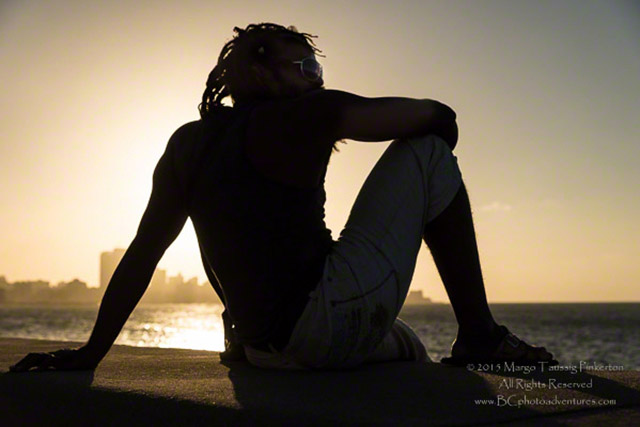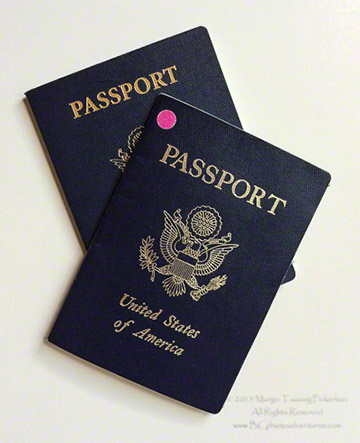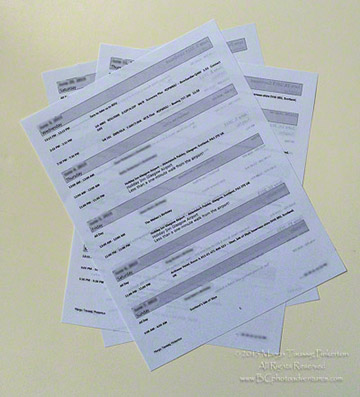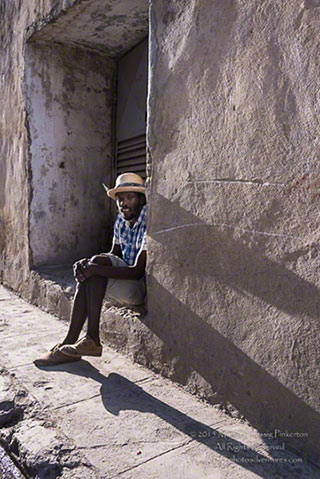
Cuba
In Photo Travel: Preparation Tips – Part 1 we covered the subjects of Guide Books, Automobile Clubs and Maps, Car Rentals and Airlines. So now that you have that handled, let’s move on to more great tips to make your travel preparations easier.

Venetian Carnival – Venice, Italy
Travel Insurance
Travel insurance can be a really good investment. If you get sick, or there are delays or cancellations beyond your control and not entirely covered by the airlines, or ships, or trains, etc., travel insurance may be your best friend. Many also offer evacuation insurance in case you have an emergency in some hard-to-reach location.
Whichever company you choose, keep in mind that you should buy your insurance fairly soon after paying for the trip, sometimes within the 7-21-day range. But check with your provider to make sure of the time frame.
Make sure that the company you select offers insurance for your destinations! Sounds silly, but, for example, we visit Cuba each year, and not all companies offer trip/cancellation insurance there.
Mary again has some sage advice here too, for those on Medicare, “And those of us on Medicare definitely need to get travel insurance if we leave the country–Medicare won’t cover you abroad.”


Passports and Documents
When traveling out of the country, it is always good to check eight to ten weeks ahead and make sure your passport is not going to expire at an inconvenient moment, i.e. just before your departure or during your time out of the country. Never cut it too close in case you get delayed in your travels.
Remember, the U.S. Passport service can take four to six weeks to process your application, sometimes longer. We have been lucky and had our passports back in a shorter time, but that should be considered the exception rather than the rule. And yes, you can pay for expedited service, but I am allergic to paying extra if I can avoid it.
We had a scare several years ago. We were headed out of the country, and fortunately, I checked the expiration dates. We were cutting it close, but at least, we were within the safe time frame for passport renewal. Make a note on your calendar ten weeks or so before your passport expires; that way, you can avoid the near-panic experience we had.
Duplicate Documents
Make three copies of the following documents in case of theft:
1. Your passport ID page;
2. Passport “mug shots” (remember, they come in pairs);
3. Birth certificate or similar proof of citizenship;
4. Prescriptions (yes, the actual piece of paper your doctor scrawled on for you to take to your pharmacy);
5. List of over-the-counter medications and vitamins;
6. Model numbers and serial numbers of all your electronics;
7. Your itinerary; and
8. Emergency contacts, including family and medical.
The first three should be individual copies, while the last five items can be combined and printed back to back to save on paper.
Where to put them:
1. Put one in your carry-on luggage, but not in the same bag as your passport;
2. Carry one on your person;
3. Leave one at home with a trusted family member or friend who can be easily contacted, i.e., don’t give it to someone who travels as much as you; and
4. Put a PDF copy on your smart phone or tablet, if you have one and are bringing it/them.
Packing
With shrinking weight limits, it is wise to look at your suitcase, duffel bag, and backpack or briefcase. There are newer, lightweight-yet-strong materials that you might consider. When you are traveling, less weight is easier on you, whether on your back or shoulder, or towed beside or behind you. There are times when the escalator does not work or there are no elevators. Keep that in mind, especially for travel outside the United States.
There is an old adage, “Take half the clothes and twice the money.” Most people pack too many clothes, clothes that never leave the suitcase.
Benita, another BCPA alumna admitted, “I tend to be an over packer (clothes & gear) but I’ve gotten better. I enjoy my adventure much better when not loaded down.” So true!
Look for lightweight, wrinkle-resistant clothing that you can mix and match for different looks each day. Anybody who knows me knows that my husband Arnie did not marry a fashionista. That said, I do like to be clean and look presentable.
Drip-dry clothing works well. Anything that can be layered for warmth without creating bulk works well.
I pack a bungee-cord-type clothes line that I can hook in the shower, across a narrow terrace, between two chairs, etc., so we can do laundry on the road. Rather than pack laundry soap, I pack Prell, good-old, plain-Jane Prell. No additives. If you get a stain, Prell most likely will get it out, and a little bit goes a long way in the sink, my washing machine of choice while traveling.
Some hotels have laundry service, and that is great. Check first, as the cost may be well worth it for you. Sometimes, one has the time to find and cope with a laundromat. We rarely do, and hardly ever overseas. So for us, it’s Prell and the sink.

New Orleans, Louisiana

Cuba
Ziploc bags or the like … never leave home without them. I use small, cheaper-cheaper quality sandwich bags to sort what jewelry I bring. Quart-sized ones can be filled with toiletries, medications, and over-the-counter items. Check with the country/ies to which you will be traveling, as some require that prescriptions travel in their original container. If that is the case, have your pharmacist give you a smaller container that will hold what you need for your trip plus some extras in case of delays. I like to add another week’s worth for safety.
Net bags can be used in place of a dob kit.
Some people use a washcloth. I do and put one in a Ziploc bag, since many foreign hotels do not supply them.
Hangers are often in short supply on the road. I bring a few lightweight ones, not only for drying clothes, but for keeping somewhat wrinkle free when we stop at a hotel or inn.
For those ladies who do their own nails, there are packets of nail polish remover so you don’t need to carry the liquid version that is bound to leak.

Floating on a Rios in Venice, Italy
Tripods are critical to our photography. We remove the ball heads and pack the tripods themselves in the checked bag(s). There are smaller, lighter tripods, but unless they truly support your camera and heaviest lens, you might as well not bother. Better to bring a sturdy monopod with your trusty ball head. As Arnie says, “If you flick one tripod leg and the others vibrate, your tripod is not a good one.”
Photo equipment is a personal choice. There is a photographer’s axiom that whatever lens you don’t bring or have is the one you want and need. That being said, one has to be practical. Before your trip, try photographing a day or two with a certain, pared-down combination and see how it goes. If that doesn’t work, try another combination. Your test locations should be the same in each case and should include landscapes, cityscapes, low-light situations, and close-ups.
Some people are traveling with photo vests to distribute the weight on their bodies rather than in a case that might be weighed and found too heavy.
Different countries have different plugs. These days, there are some great adapters that are not the heavy behemoths of years past. First, however, you need to check on the parameters for the country/ies you are visiting. We have several useful links on our Resources List page. Just scroll down to Electricity Here and Abroad. Then run a search and see what makes sense for you depending upon your frequency and variety of travel.
Cell Phones
Different carriers have different options. Check them out carefully and weigh them against buying a cell phone in your destination country. Another choice is to buy a refillable phone card, used much as a credit card. You pay up front and replenish when needed.
Credit Cards and Cash
Many of us think that credit cards are the easy way to go (and in many ways, they are), but beware, as many charge double fees overseas – one fee for a foreign charge plus another conversion fee. One credit card company that is perennially touted for not doing this is Capital One (Visa). Also know that in many countries, American Express is not widely accepted. We have found Visa to be the most widely accepted card.
Just about every airport these days has an exchange bureau to convert your currency into the local one. Double check with your destination airport to make sure they have one. ATM’s work in many places, but make sure you have a chip in your card. If not, get a replacement card with a chip in it. Your local bank can often change currency for you with some advance notice. If you are a member of AAA, they may be able to help you.
However you get your local currency, it is always a good idea to have some on hand for tips, meals, and emergencies.
Now, sit back, and enjoy planning your next trip.
by Margo Taussig Pinkerton (aka, TBC–The Barefoot Contessa)
© 2015 Margo Taussig Pinkerton. All Rights Reserved.

Leave a Reply